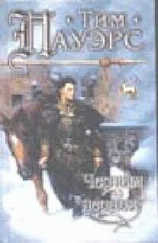Her eyes widened ever so slightly, and his smile grew broader.
“Or perhaps even on the day when Refuge seeks admission to a Republic of Haven worthy of the men and women fighting to restore it.”
But Dark Fall ends.
Dawn comes at last to even deepest night,
And men unafraid,
And women of valor
Walk bravely into the light.
Brendan DuBois
Love in the Time of Interstellar War
I was late getting into the NCO staff meeting at the Mitchel Joint Navy-Army station that morning and when I started getting ragged on by the other three NCOs, I took my cane and rapped it against my right leg—the metal and wooden one—and I said, “Give it a rest, guys, okay? One of the K-9 units dragged my leg out last night for a chew toy.”
That got some laughs but my Ell Tee—Antonia Juarez, a regular Army officer who was sent down to this unit once her spine got broke during a Creeper attack—moved her wheelchair a bit next to her desk and said, “Very good, Hart. Have a seat. And then come up with a better excuse. That’s the third time you’ve used it in the past six months.”
I sat down with a thin folder in my hand, joining the other NCOs who were part of the 2nd Infantry Brigade Combat Team, the New York National Guard unit tasked to keeping peace and order on Long Island.
I was the unit’s intelligence officer, which should have been assigned to a lieutenant or captain, but since the Creepers invaded a decade ago, the thinned out armed forces of the United States had to adjust to doing a lot more with a lot less.
Including me, a one-legged first sergeant whose stomach felt like it was on fire, and who had skipped breakfast again this morning.
More than a century ago the Mitchel Joint Navy-Army station had been an Air Force base, flying and training a lot during World War II. Post-war, it was eventually decommissioned, parts of it were turned over to civilian use, and then it was only re-founded ten years ago, when the Creepers invaded. Technically it should be a Navy-Army-Air Force station because of its history, but since the Creeper’s killer stealth satellites in orbit burn down anything with electronics that flies, the United States technically doesn’t have much of an Air Force anymore.
Lieutenant Juarez glanced down at her clipboard. “All right, let’s get with it. Give me your morning stats, and keep it short and to the point.”
One by one, we gave our status reports.
Armed patrols along the abandoned and tsunami-swept towns of Long Island reported the detaining of forty-three coastie refugees trying to sneak back to their homes. They were being fed, processed, and would be returned via ferry to a Red Cross camp near New Canaan.
Logistics reported that a convoy successfully arrived yesterday at 1400 hours after an uneventful trip along the old I-295.
A couple of other reports followed, and it was my turn
“Ma’am, I beg to report that no alien activity has been monitored at the enemy base dome at Cunningham Park during the last twenty-four hours. During that time period, mobile artillery from the 1st Battalion, 258th Field Artillery, fired a total of six 155-mm shells at the dome.”
“No response?” she asked.
“No, ma’am,” I said.
“Very well,” she said, and after going through the day’s schedule and other housekeeping details, she said, “Dismissed… save for you, Sergeant Hart.”
There were sounds of chairs scraping and a low “uh oh” as the other NCOs walked out, and I shifted in my seat, adjusted my wooden leg, and when the door to the lieutenant’s office—a former classroom—was shut, I said, “Ma’am, I apologize again for being late.”
She reached over and took a red-bordered file folder from her desk. “Shut up, Hart. Apology not accepted.”
I kept my mouth shut, and Lieutenant Juarez said, “We’ve got visitors coming here tomorrow. You’re tasked to escort them, accompany them, give them what they need, and ensure they have a successful visit. Got it?”
“Yes, ma’am. May I ask why?”
“Because you’re what passes for intelligence in this unit, that’s why,” she said. “You’re to escort them to the base dome and do whatever it is that they require.”
“Are they VIPs? Visitors?”
“In a manner of speaking, yes,” she said. “They’re from Russia, and they’ll be arriving by watercraft at about oh nine-hundred, at the harbor at Hempstead. Provide meals, shelter, transport.”
“Yes, ma’am,” I said. “Are they military?”
She glanced over at me like I was an errant first-grade student who had just wet himself. “No, they’re an advance unit for what’s left of the Bolshoi Ballet… Christ, of course they’re military.” Lieutenant Juarez went back to her paperwork. “They are Russian Navy personnel… Petrov and Kosanskey. Special detail from Kallingrad. They’ve been on the water now for nearly a month.”
“I see, ma’am,” I said. “And how long do you expect them to be here?”
“Long enough to do their job.”
She waited and I waited, and then I bit.
“Lieutenant, what’s their job?”
She closed the folder, put it back on her desk.
“To destroy the alien base dome at Cunningham Park.”
Well, that got my attention, because I’ve only heard second- or third-hand about successful attempts to destroy the base domes. Scores of them were scattered around the United States countryside, and many others were stationed around the world. They were the base of operations for three types of Creepers—Battle, Transport, Research—that skittered out in their armored exoskeletons to explore, kill, or whatever else aliens do as part of their occupation.
But they were nearly invulnerable to any form of attack, from lasers to explosive shells to napalm. My mention earlier about six 155 mm shells striking the dome in Cunningham Park—about 29 klicks to the west of us—was just the Army’s way of telling the Creepers inside that they were still being observed.
Not that it seemed to bother them that much. We had one reliable weapon to use against the Creepers, a binary nerve agent fired from an infantry weapon, a Colt M-10, but more often than not, when it came down to a fight, sometimes the Creepers got killed and most times, the attacking soldier or Marine was either scorched to a cinder or sliced into pieces by a laser beam.
But to destroy a Creeper base dome took one thing and one thing only: a nuclear bomb.
Seemed simple enough, didn’t it. There were tens of thousands of nuclear bombs among the world’s arsenals when the invasion took place, so why hadn’t each dome been destroyed upon its establishment?
Delivery devices, that’s why.
With the killer stealth satellites in orbit, anything flying—from a missile to an aircraft to even an unmanned drone—would be blasted out of the sky before it posed a threat. Which left delivery by truck, tank, or even a horse drawn carriage. But even then, the Creepers could detect the electronics contained within the weapons, and they would still be destroyed by a particle beam or a “rod from God” before it got close enough to do any damage.
But just over a year ago, word filtered down from the government in Albany that our allies, the Russians—everybody was an ally nowadays—had come up with a way of destroying a dome by a nuclear device.
It involved breaking the bomb into several components, being able to shield the electronics from detection, and then slowly, gradually, transport those pieces up to a Dome, usually by two or three soldiers armed with nothing more than a knapsack. There, the soldiers would quickly reassemble the device, and then set it off.
Читать дальше








![Тим Пауэрс - Последние дни. Том 2 [litres]](/books/393813/tim-pauers-poslednie-dni-tom-2-litres-thumb.webp)
![Тим Пауэрс - Последние дни. Том 1 [litres]](/books/394090/tim-pauers-poslednie-dni-tom-1-litres-thumb.webp)
![Тим Пауэрс - Последний выдох [litres]](/books/402145/tim-pauers-poslednij-vydoh-litres-thumb.webp)